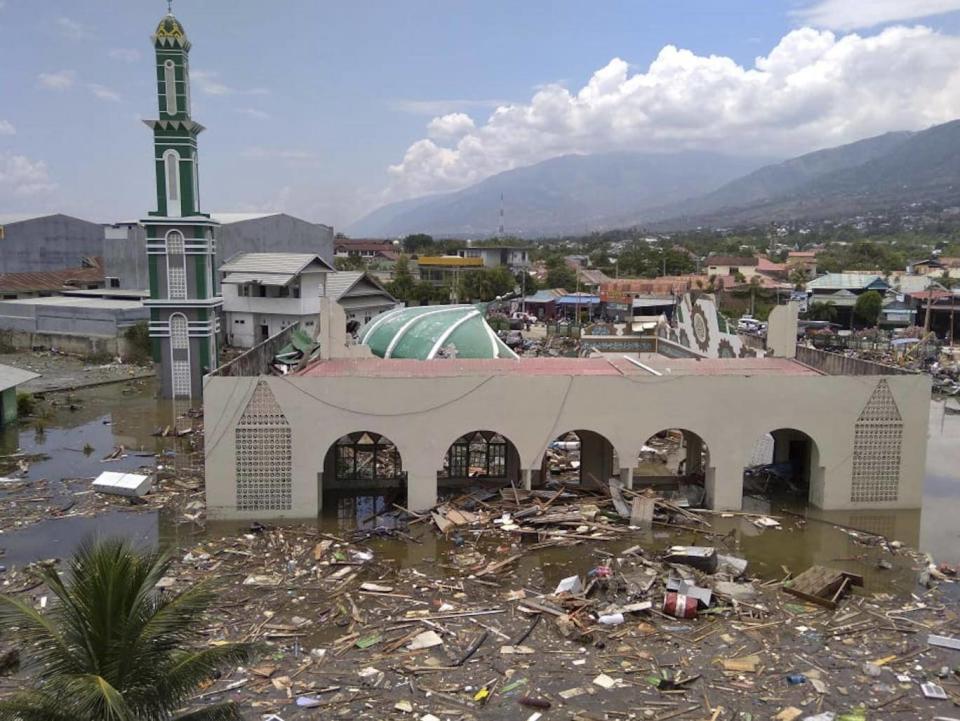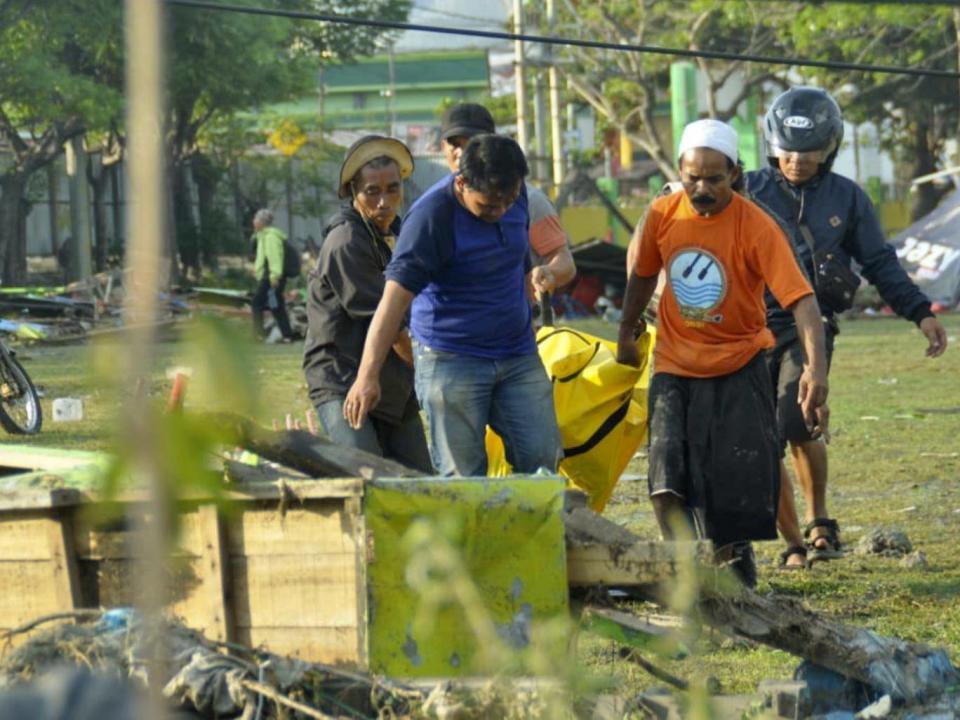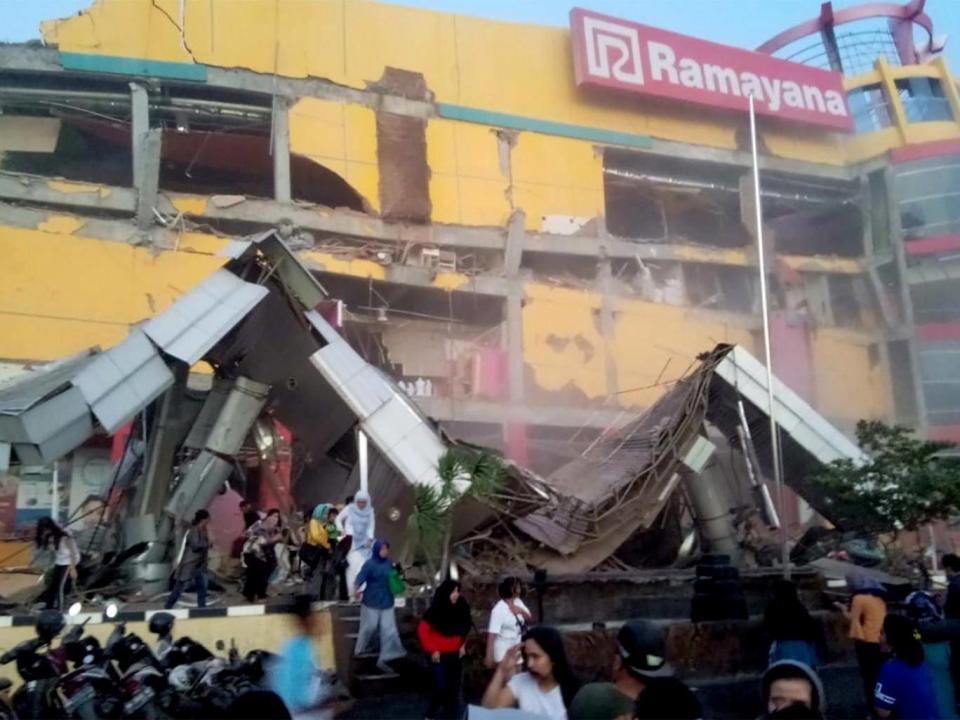Indonesia tsunami: Rescuers struggle to reach cut-off city of nearly 300,000 people after disaster kills hundreds
Rescuers are struggling to reach Donggala, a city of nearly 300,000 people in Indonesia, after a 7.5-magnitude earthquake and a powerful tsunami hit the coast of the country, killing at least 384 and injuring hundreds more.
Power and telecommunications to the region have been cut off and the roads are damaged, leaving officials unable to reach those in need.
Aid is also yet to reach the nearby town of Mamuju, which has been severely affected by the quake.
At least 384 people were killed in the hard-hit city of Palu, Indonesia's disaster agency spokesman Sutopo Purwo Nugroho said.

A landslide has blocked a major road leading to Palu, the capital of Indonesia's Central Sulawesi province, according to the BBC, and a key bridge crossing a coastal river has also collapsed.
"We need heavy equipment for this evacuation process," Nugroho said. "We also need to double up our rescue team personnel."
Thousands of homes have been damaged in Palu. Hundreds have been injured, leaving hospitals overwhelmed.
Patients are being treated outside due to continuing strong aftershocks.
Tens to hundreds of people involved at a beach festival are also missing, the disaster agency said earlier.
More than half of the 560 inmates in a Palu prison fled after its walls fell during Friday's quake, according to the warden, Adhi Yan Ricoh.
"It was very hard for the security guards to stop the inmates from running away as they were so panicked and had to save themselves too," he told state news agency Antara.
Ricoh said there was no immediate plan to search for the inmates because the prison staff and police were consumed with the rescue effort.
"Don't even think to find the inmates. We don't even have time yet to report this incident to our superiors," he said.
The 3m tsunami was triggered by the earthquake and smashed into two cities and several settlements on Sulawesi island at dusk on Friday.
In some places the water rose as high as 6m.
"We got a report over the phone saying that there was a guy who climbed a tree up to 6m high," Mr Nugroho said.
Palu, which has a population of 380,000 people, was strewn with debris from fallen buildings, including a shopping complex and a large mosque.
Waters from the tsunami left the mosque partially submerged.
Many residents in the area were sleeping outside after the quake, too afraid to return indoors due to the aftershocks.

The city is the capital of the Central Sulawesi province and is built around a narrow bay which is said to have magnified the force of the tsunami water as it travelled inland.
Indonesian TV broadcast footage, filmed on a smartphone, showing the moment that the wave hit the land, causing people to scream in fear and flee.
Bodies in Palu lay partially covered in tarpaulin and a man carried a dead child through the wreckage.
Mr Nugroho said essential aircraft can land at Palu airport but AirNav, which oversees aircraft navigation, said that the runway is cracked and the control tower damaged.
A 21-year-old air traffic controller was killed in the quake after he stayed in the tower to ensure a flight he had just cleared for departure got airborne safely.
"We hope there will be international satellites crossing over Indonesia that can capture images and provide them to us so we can use the images to prepare humanitarian aid," Mr Nugroho said.
Indonesian president Joko Widodo told reporters on Friday that he had instructed the security minister to co-ordinate the government's response to the damage.

He has also called on the country's military chief to assist with the search efforts and evacuations as needed.
United Nations spokesperson Stephane Dujarric said UN officials were in contact with Indonesian authorities and "stand ready to provide support as required".
Indonesia is vulnerable to earthquakes because of its location on the Ring of Fire, an arc of volcanoes and faultlines in the Pacific Basin.
On 5 August, a powerful earthquake on the island of Lombok killed 505 people. Most died inside collapsing buildings.

Another series of strong quakes in mid-August killed at least a dozen people on Lombok and Sumbawa, a nearby island.
In 2004, a huge earthquake off the Indonesian island of Sumatra triggered a tsunami across the Indian Ocean.
It killed 230,000 people in a dozen countries, including more than 120,000 in Indonesia.
Associated Press contributed to this report

 Yahoo News
Yahoo News 
